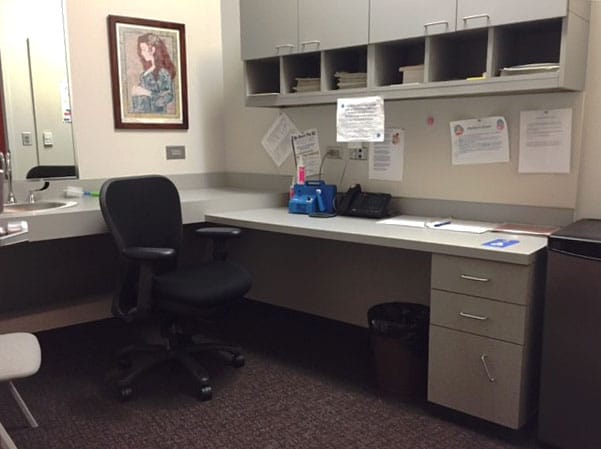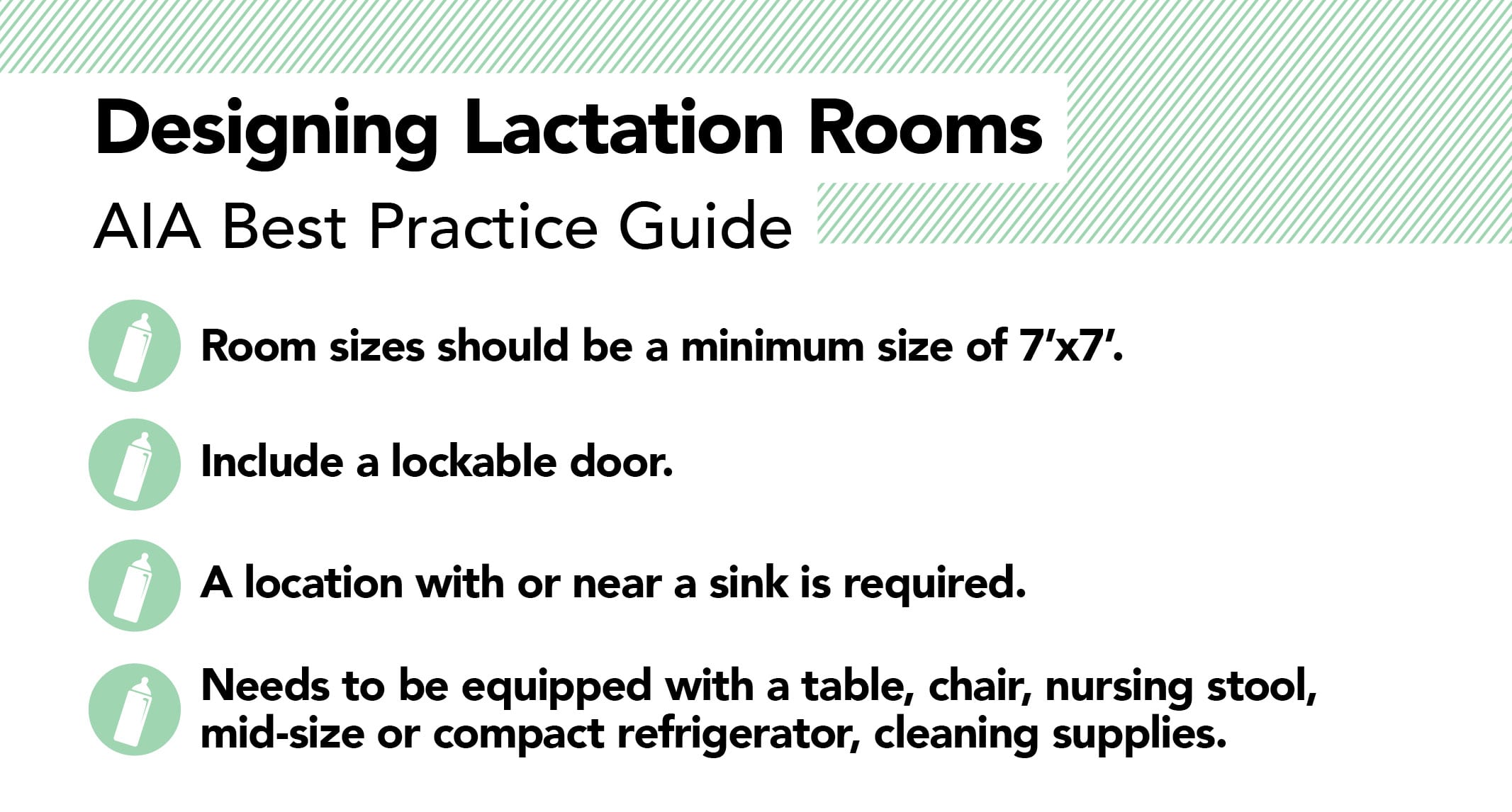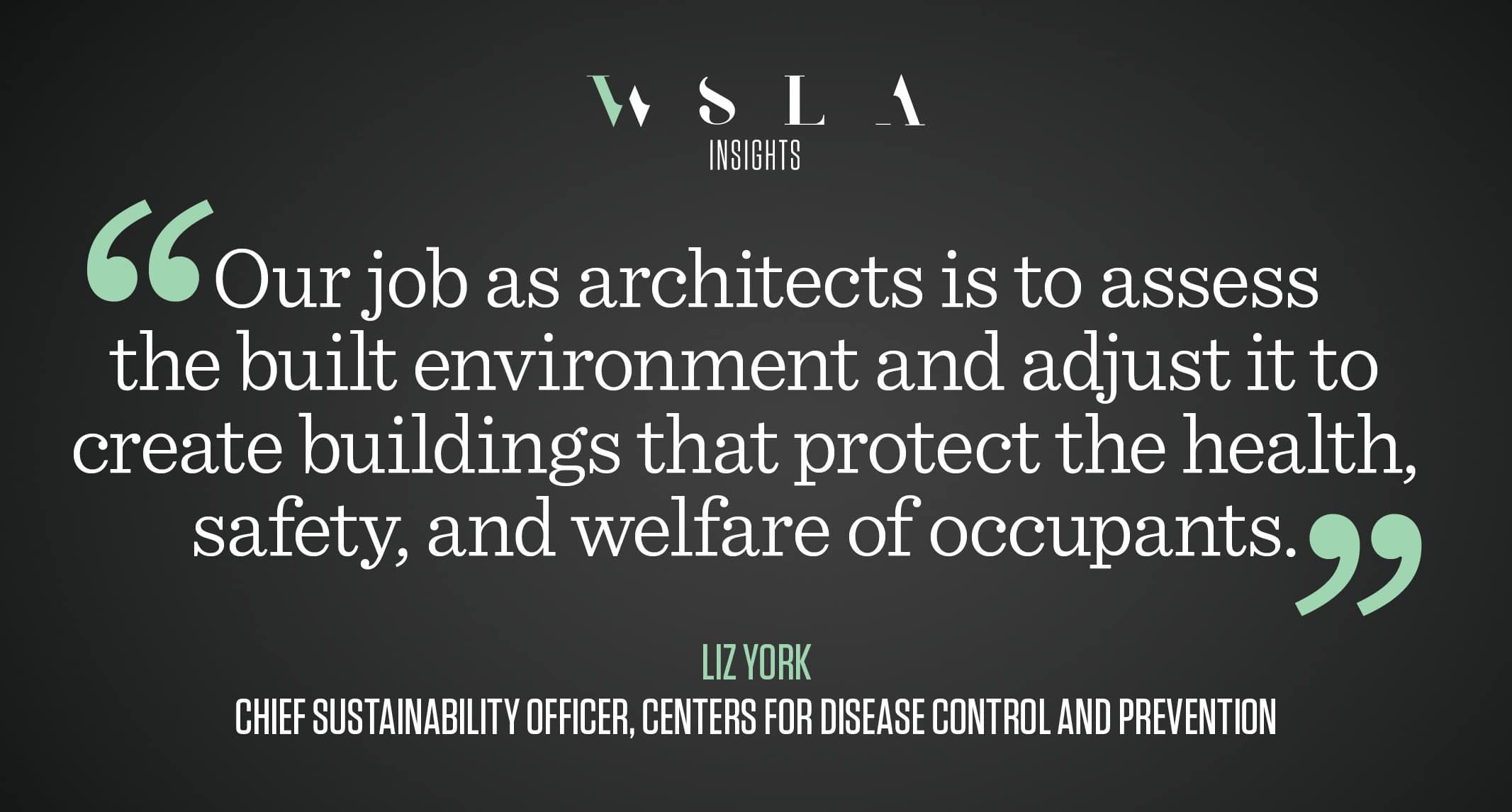
WSLA Insights is a special section in each issue of gb&d magazine where alums from the Women in Sustainability Leadership Award share their guidance and leadership experience.
A nice lactation room goes a long way for working mothers

Lactation room. [Photo: Courtesy of Liz York]
Storage rooms, closets, and bathrooms used to be the only choices for nursing mothers at work. As an architect and sustainability leader at the Centers for Disease Control and Prevention (CDC), I set out to change the built environment for the better.
Knowing everyone doesn’t know what working mothers need, I worked with universities, architects, and lactation experts to author the American Institute for Architects (AIA) Best Practice Guide for Lactation Rooms. This document translates science into guidance for designers and is highly regarded in the medical and architectural community.
Healthy Spaces
Investing in a dedicated space for pumping represents a minimal expense. Plumbing, a solid door, and furniture can be had for a few thousand dollars—a bargain compared to losing a valued employee.

At CDC, my office works to translate science into action in other ways, too. Another example is FitwelSM (Facility Innovations Toward Wellness Environmental Leadership). This health-focused facility rating system was developed with the General Services Administration (GSA) and the New York City Department of Health and Mental Hygiene (DOHMH) to give strategies for building healthier buildings. Over five years, CDC, GSA, and DOHMH reviewed more than 3,000 research studies and consulted with public health experts and designers to craft this voluntary national certification. Fitwel assesses the healthiness of building environments and offers ways to improve building occupants’ health and wellness.
As the nation’s public health agency, CDC promotes breastfeeding as important for human nutrition and general health. Our job as architects is to assess the built environment and adjust it to create buildings that protect the health, safety, and welfare of occupants. CDC’s lactation support program began in 1996 with one lactation room in Atlanta. Today, the program offers 34 lactation rooms at 13 campuses, and more than 4,000 staff have used the program. The rooms include a Medela pump, table, comfortable chair, footstool, towels, and a sign-in sheet. Most importantly, working moms have a quiet, private place, free from interruption.

Key Standards
The AIA Best Practice Guide includes standards on lactation room size (7’x7’ minimum), privacy (lockable door), lighting, HVAC, and refrigeration. A location with or near a sink is required. The room should be equipped with a table, chair, nursing stool, mid-size or compact refrigerator, cleaning supplies and a hospital-grade, FDA-approved electric breast pump. Anticipated “useful accessories” include trash cans, paper towel dispenser, coat rack or hooks, and a full-length mirror. Other considerations include soothing color palettes and a room schedule.
Just as the CDC is the steward of health for the U.S., the building and design community is the steward for health in the built environment. Architects and designers need to continue to examine the way design impacts and inspires people to improve buildings, communities and our health. As wellness frameworks like Fitwel are established, we can begin to unravel the structural barriers to healthy environments, ultimately promoting gender equity, wellness, and engagement in every workplace.
Read more from past WSLA alums here.

Liz York is chief sustainability officer and associate director for quality and sustainability for the CDC and a 2016 WSLA winner. Appointed as the first CSO for CDC in 2008, York establishes sustainability in CDC policy and operations, implements healthy and sustainable work environments, and facilitates staff involvement in sustainability efforts. In 2016, she was recognized by the AIA as a Fellow for her work to impact health and well-being by empowering architects to build better environments.

